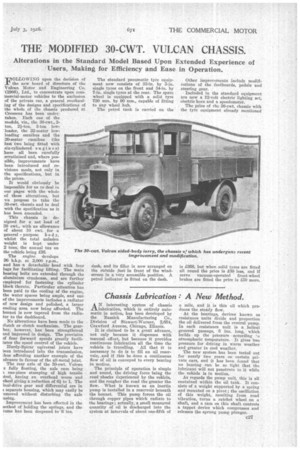Chassis Lubrication : A New Method.
Page 49

If you've noticed an error in this article please click here to report it so we can fix it.
AN interesting system of chassis lubrication, which is entirely automatic in action, has been developed by the Eassick Manufacturing Co„ Division of Stewart-Warner, 2,654, Crawford Avenue, Chicago, Illinois.
It is claimed to be a great advance, not only because it dispenses with manual effort, but because it provides continuous lubrication all the time the vehicle is travelling. All that it is necessary to do is to fill an oil reservoir, and if this be done a continuous flow of oil is conveyed to every bearing in motion.
The principle of operation is simple and sound, the driving force being the road shocks experienced by the vehicle, and the rougher the road the greater the flow. What is known as an inertia pump is installed in a reservoir beneath the bonnet. This pump forces the oil through copper pipes which radiate to the bearings ; actually, a small measured quantity of oil is discharged into the system at intervals of about one-fifth of a mile and it is this oil which produces the steady flow.
At the bearings, devices known as resistance units divide and proportion the oil delivered from the central pump. In each resistance unit is a helical grooved passage, 8 ins, long, which builds up the pressure according 4o atmospheric temperature. It gives less pressure for driving in warm weather and greater in cool weather.
The new system has becu tested out for nearly two years On certain private cars, and it has been found that no bearing can be so tight that the lubricant will not penetrate to it while the vehicle is in motion,
As regards the pump unit, this is all contained within the oil tank. It consists of a weight supported by a spring and mounted on a pivot; the oscillation of this weight, resulting from road vibration, turns a ratchet wheel on a shaft, and a cam on this shaft controls a tappet device which compresses and releases the sprung pump plunger.












































































































